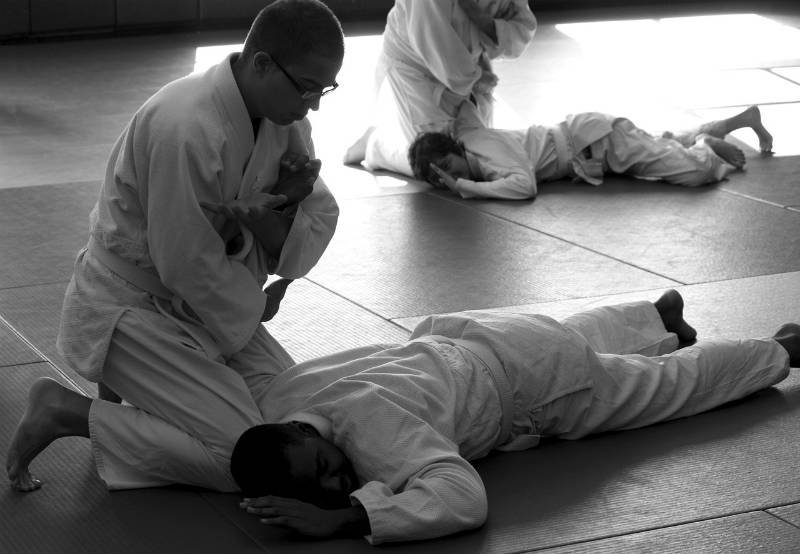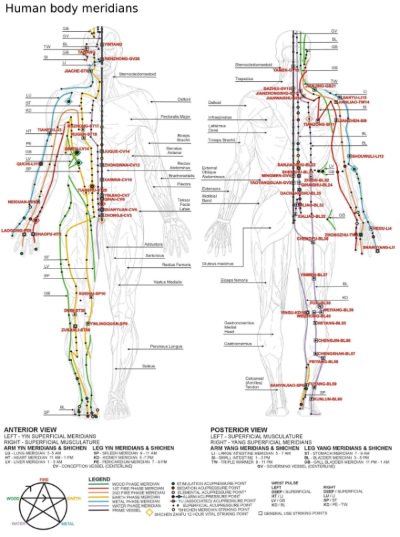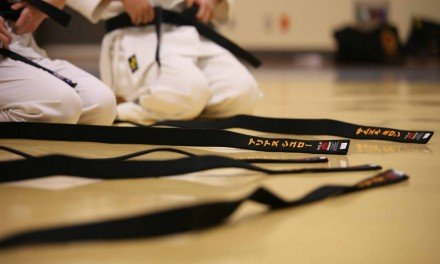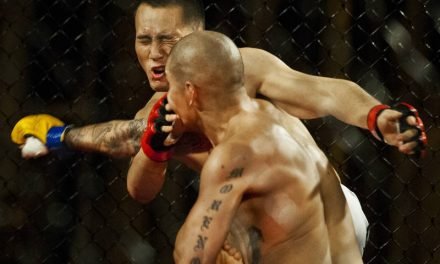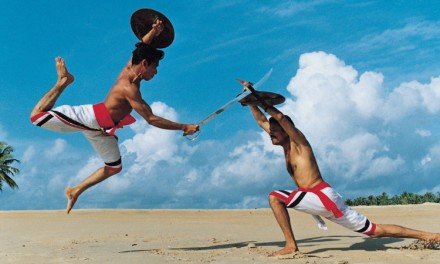What is a Pressure point?
The concept of pressure point traces it’s origin back to Indian Ayurveda & Siddha medicine, Martial Arts and traditional Chinese medicine. A pressure point is a vital point or a very sensitive point in the body which on application of pressure in a specific manner can produce extreme pain and or serious injuries (death due to impact on a pressure point is still debatable). This is because pressure points are places where a nerve or a blood vessel is very close to the skin, mostly supported by a bone. This arrangement makes these points extremely vulnerable. Use of pressure points in Martial Arts has been propagated by South Indian Martial Art Varma Kalai, which focuses mainly on pressure points.
Though there are more than 300 known pressure points, from Martial Arts perspective, 107 are considered and practiced. Most pressure points are located on the nervous system and are known as Meridians. Chinese medicine practitioners believed that life energy (Qi) flowed through these Meridians and if struck properly, can cause immense damage (and death in some cases).
Primarily, the following Martial Arts make use of pressure point attacks on the opponents:
- Karate
- Aikido
- Kyusho Jutsu
- Hapkido
- Jiu-Jitsu
- Certain Styles of Kung Fu
What happens when a Pressure point is stimulated?
A Pressure point can be stimulated by hitting, rubbing or pressing it in a particular manner. Once done, it can achieve the following effects on the opponent:
- Extreme pain
- Balance disruption
- Involuntary movements/muscular spasms
- Motor dysfunction
- Concussion
Types of Pressure Points
Pressure points are classified based on the type of effect they product when acted upon in a specific manner. Following are the types :
Pain pressure points
These are the most common types of Pressure points. Where a person thinks of a pressure point, this is the type he imagines in his brain. These are the points which when stimulated by pressing, rubbing or or striking, cause pain. An example of pain pressure point is any kind of joint lock, an elbow lock for example. The modes operandi behind this type of pressure point is to give the opponent, an excruciating amount of pain so that he stops attacking by other means and his all focus is diverted to relieve this pain.
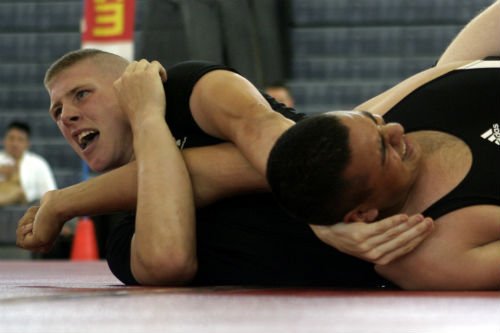
Pain pressure point will always work, there is no guarantee to it. If the opponent does not feel the pain due to any reason, be it his mental illness or influence of drugs or body conditioning or anything else, pain pressure point would not be effective as the whole premise of it is stopping the opponent by causing immense pain at a particular point in the body.
The pain pressure points are maximum in number but as mentioned above, the are least reliable among all types of pressure points.
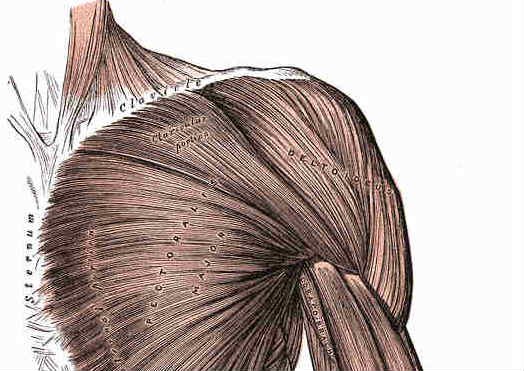
Muscle Pressure Points
These pressure points work on muscles and become active when muscle is forced to stretch in a particular way. It causes the whole body to respond. These pressure points may or may not cause pain and can be neutralized by tightening of muscles, which means if the muscle is tightened, these pressure points won’t be effective. For example, running your knuckle down the length of a muscle makes the knee of the opponent bend and weight of the body drop. Though it is not easy to stimulate muscle pressure points, with practice you can master the art.
Reflex Pressure Points
Reflex pressure points do not produce pain, they rather product sudden involuntary movements in opponent’s body. Result of stimulating a reflex pressure point may be movements like release of a grip, knees to bend or choking the opponent. For this pressure point to be effective, you have to be quick and press hard against the point. The more quick you are, the more effective are the results as opponent is suddenly overthrown by a surprise element along with the stimulation of the pressure point.

Reflex pressure points are least in number but most effective and reliable when stimulated. Some variations to reflex pressure points are:
Blood/Blood pressure: The baroreceptors (sensors which supply information to brain about blood pressure and hence helps maintain the same) in the blood are very sensitive. Applying pressure to these sensors sends a signal to the brain that the blood pressure is high. To check it, the body reduces the blood pressure resulting in lowering of blood pressure.
Breaking Points: Certain points when struck effectively will lead to breakage, such as floating ribs, knee sides, joints etc.
Brain Protection Points: Brain is very sensitive and is protected by a fluid called cerebrospinal fluid. This fluid allows the skull to take impact without causing damage to the brain. But there are techniques which allow to eliminate this layer of protection and cause temporary unconsciousness, confusion or other such symptoms when stimulated with a blow. These effects in the opponent can be achieved when hitting the occipital ridge, which is the region at the back of the head where the base of the skull meets the spine.
Balance disruption points which helps to dis balance the opponent and buy out time to get back in the game or overpower the opponent.
Some Effective Pressure Points
- Temples
- Ears
- Eyes
- Throat
- Chin
- Occipital Ridge
The following video gives a demonstration of three basic pressure points.

